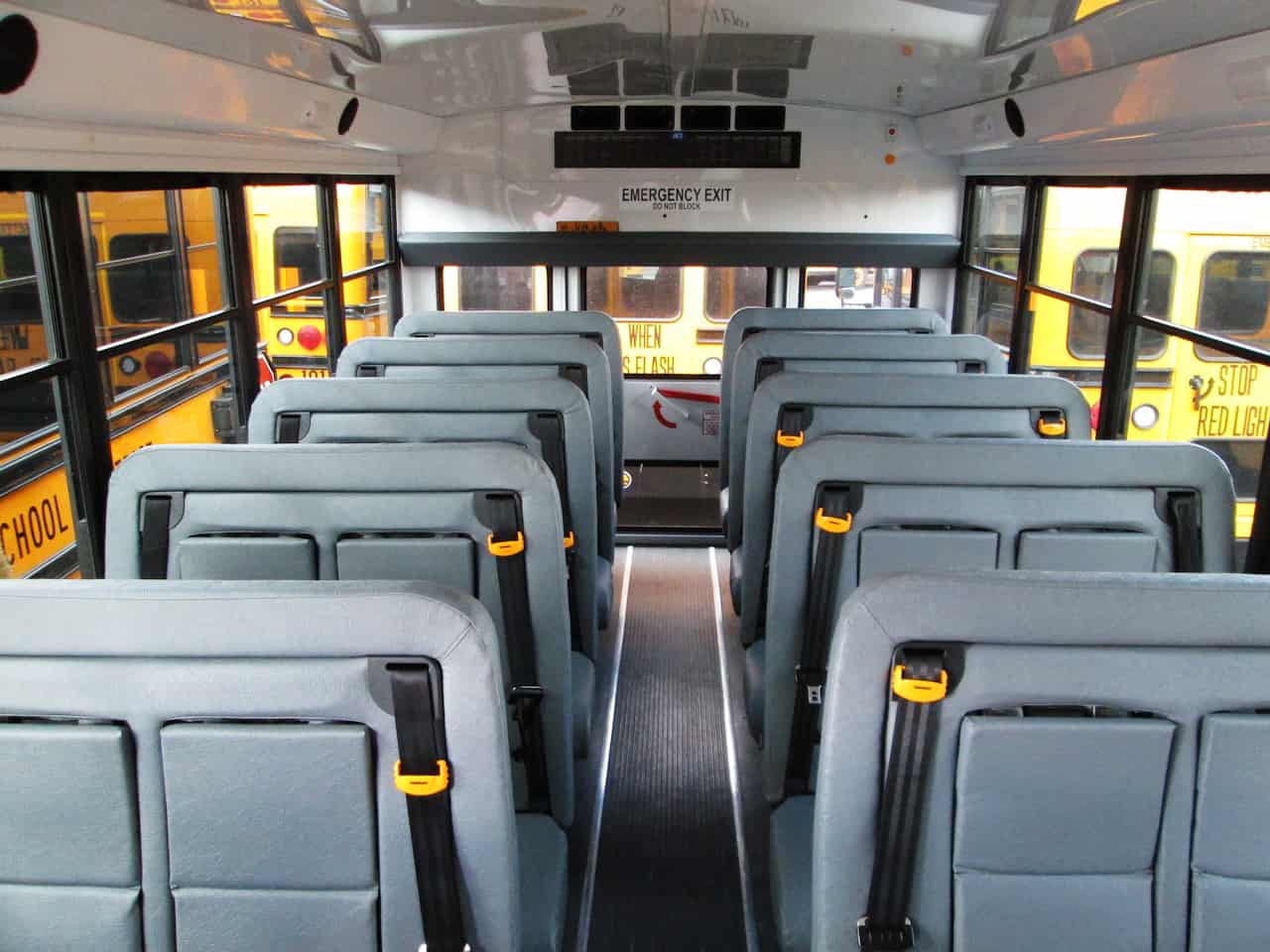In general, parents and lawmakers appear to be content to let their children ride school buses every day, seemingly unconcerned about the fact that those same children would be securely buckled up if they were riding in a car. So, why is there such a disparity in school bus safety? Who decided that seat belts on school buses are unnecessary, and is this even true? In this article, I will give out a few reasons why seat belts aren’t required on school buses.
Contents
Seat Belts Aren’t Necessary For Safety
The National Highway Traffic Safety Administration (NHTSA), which collects traffic and safety data, has historically argued that seat belts are unnecessary on school buses because, according to the organization, the school bus is the safest vehicle on the road (more on its current stance in a second). According to NHTSA data, from 2008 to 2017, only 1,241 people were killed in school transportation-related crashes in the United States, with 264 of those being school-age children.
Seat belts have been required on passenger cars since 1968, and 49 States and the District of Columbia have enacted laws requiring the use of seat belts in passenger cars and light trucks. There is no question that seat belts play an important role in keeping passengers safe in these vehicles. But school buses are different by design, including a different kind of safety restraint system that works extremely well.
Large school buses are heavier and distribute crash forces differently than passenger cars and light trucks do. Because of these differences, bus passengers experience much less crash force than those in passenger cars, light trucks, and vans. NHTSA decided the best way to provide crash protection to passengers of large school buses is through a concept called “compartmentalization.” This requires that the interior of large buses protect children without them needing to buckle up. Through compartmentalization, children are protected from crashes by strong, closely-spaced seats that have energy-absorbing seat backs.
SEE MORE:
The Law Does Not Require Seatbelts On School Buses
Seat belts are now only required on small school buses weighing 10,000 pounds (4,535 kilograms) or less. States have the option of mandating them on the rest of the school buses. Only eight states currently require seat belts on large school buses: Arkansas, California, Florida, Louisiana, Nevada, New Jersey, New York, and Texas, though many others are considering similar legislation.
The reason for this is because the number of lives saved each year would be small, and the cost of installing belts, which is estimated to be between $7,000 and $11,000 per bus, is simply not worth it (experts estimate adding seat belts to all school buses could easily cost each state over $100 million). Since most school buses are on the road for at least 10 and often up to 20 years, it’s unlikely school districts would choose to retrofit older buses at that cost, which means it would potentially take decades for new legislation requiring seat belts to take effect across a fleet as new buses slowly replace older ones. As for now, it’s unclear whether federal standards will change, but states are still free to set tougher restrictions as they see fit.
It Is Hard To Enforce Wearing Seatbelts On School Buses

Not only would adding seat belts to school buses be costly, but experts also cannot agree on what type of seat belts should even be used. Because children tend to move around a lot, there’s no guarantee they would use seat belts, if installed or used properly. Bus drivers certainly cannot be tasked with enforcing proper seat belt use, because their attention must remain focused on the task of driving.
Besides that, because of the way that school buses are designed, normal seat belts wouldn’t function the same way in a crash that they do in other vehicles; their presence could potentially cause more harm than good to a body during a crash. If a crash does happen, the absence of seat belts allows for easier access and evacuation of passengers, including when emergency services arrive on the scene.
Experts also fear that adding seat belts to school buses would reduce overall bus capacity. To the extent that fewer children can ride buses, they might be forced to seek other means of getting to and from school — means that have proven to be more dangerous than riding a school bus without seat belts.
On the other hand, there is still a drawback from not equipping seatbelts on school buses. The National Transportation Safety Board notes that despite school buses being “extremely safe,” they are susceptible to rollover crashes. “In these accidents, compartmentalization was not enough to prevent all injuries; for some of the children involved, a seat belt could have lessened their injuries or even saved their lives,” the NTSB said while recommending three-point seat belts for new buses.
However, parents may take some comfort in knowing that school buses are the most regulated vehicles on the road, and as a result, students riding them to school are statistically about 70 times safer than they would be traveling to school by car. Other than compartmentalization, school buses also are highly visible and have safety features like red flashing red lights, cross-view mirrors, and stop-sign arms. Drivers stay on carefully planned routes and maintain slow speeds, so seat belts aren’t needed. That’s the thought, anyway.
If you find this article interesting, you can visit Industry Knowledge for more new and helpful information!



